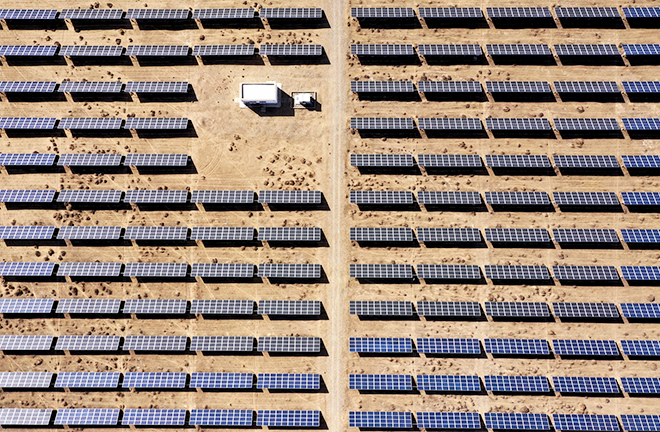Injecting Chinese strength into global green development

An aerial view of the photovoltaic power generation park with the world’s largest installed capacity in Qinghai Province on March 19 Photo: IC PHOTO
International academia has praised China’s dedication to green development and its collaborative efforts with many developing countries to address climate change challenges and support their transition to sustainable practices.
Ongoing green transition
In a recent interview with CSST, Alexandra Peralta, an associate professor from the School of Economics and Public Policy at the University of Adelaide in Australia, emphasized that as a leading player in the global economy and a major carbon emitter, incorporating China into global sustainability efforts is not only important but absolutely essential, explaining that “without China’s active participation, achieving international climate goals is simply not possible.”
Peralta observed that China is transitioning toward a low-carbon economy, with clear targets to peak carbon emissions before 2030 and achieve carbon neutrality by 2060. For instance, in many Chinese cities, public transportation now largely consists of new energy vehicles, showcasing China’s rapid adoption of clean energy solutions. Under mounting global pressure to meet the goals of the Paris Agreement and limit global temperature increase to within 1.5 degrees Celsius, Chinese enterprises have accelerated technological innovation and actively explored pathways to sustainable development. Today, China’s technological capabilities in solar, wind, battery production, and electric vehicles have matched or surpassed its Western counterparts, demonstrating innovation at scale and speed.
“Promoting green development is key for China to ensure the sustainable development of its economy,” asserted Megan Bedford, a senior research officer from the Social Policy Research Center at the University of New South Wales in Australia. “China’s green transition is increasingly becoming the powerhouse of its economic and energy policies, demonstrating that sustainable development can drive economic growth.”
According to data released by China’s National Energy Administration, the country has achieved concrete results in its green transition. Since the second quarter of 2024, carbon emissions have declined, largely due to the power sector’s adoption of clean energy over traditional energy sources. Renewable energy generation reached 3.46 trillion kilowatt-hours in 2024, a 19% year-on-year increase, accounting for approximately 35% of total electricity output.
Meanwhile, significant shifts are underway in China’s steel industry, the nation’s second-largest carbon emitter. As stricter policies are implemented, carbon emissions in the steel sector have decreased. Energy-efficient electric arc furnaces have been widely introduced across various types of steel plants, signaling a critical turning point for the industry. In addition, sales of Chinese electric vehicles continued to surge in 2024, capturing an even larger share of the market and further reducing demand for fossil fuels.
Peralta also highlighted efforts to improve corporate environmental accountability. In response to investor expectations, stock exchanges in mainland China have proposed mandatory environmental disclosures for large publicly listed companies, requiring them to report both environmental impacts and associated risks. These measures, she said, will encourage companies to better integrate environmental protection with productivity enhancement.
Promoting international cooperation
Peralta stressed that China has actively promoted the Green Silk Road by setting up various guidelines and partnership agreements. In late 2018, China released the Green Investment Principles (GIP) for the Belt and Road Initiative (BRI), a set of principles for greening investments among BRI countries. To date, over 40 major international financial institutions have signed up to the GIP.
In 2019, the BRI International Green Development Coalition was established to engage in dialogue, exchanges, joint research, capacity building, and other activities. Thereafter, China published the “Guidelines for Green Development of Outbound Investment and Cooperation” in 2021 and the “Guidelines for Ecological and Environmental Protection of Foreign Investment Cooperation and Construction Projects” in 2022, both focusing on environmental risk management for overseas BRI projects and supply chains, Peralta added.
Bedford observed that as the BRI enters its second decade, the next iteration of the initiative will shift away from grand mega-projects to prioritize “small and beautiful” high-quality projects. Investments in green technology—such as electric vehicles and batteries—as well as in green energy production and transmission, are now key elements of China’s strategic engagement framework for pursuing this model.
Southeast Asia provides a prime example: the region’s abundant renewable energy resources and key minerals have attracted significant Chinese investment. Between 2019 and 2023, China provided approximately $3 billion to Southeast Asian nations for renewable energy projects—predominantly hydropower projects—helping partner nations lay a foundation for greener energy infrastructure.
Edited by CHEN MIRONG
